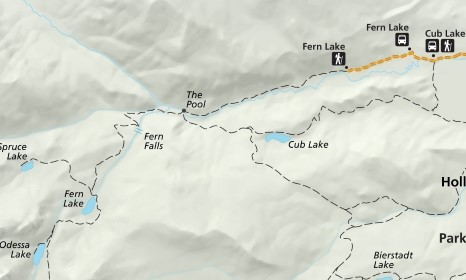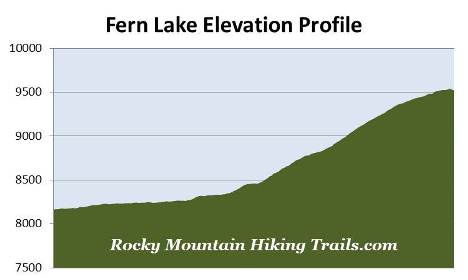
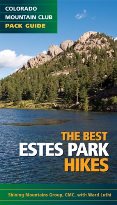
Fern Lake
| Trail Features: | Scenic Lake Views, Fall Aspens, Wildflowers | 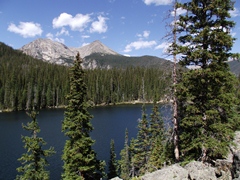 |
|||
| Trail Location: | Fern Lake Trailhead | ||||
| Roundtrip Length: | 7.6 Miles | ||||
| Trailhead Elevation: | 8165 Feet | ||||
| Total Elevation Gain: | 1400 Feet | ||||
| Avg. Elev Gain / Mile: | 368 Feet | ||||
| Highest Elevation: | 9540 Feet | ||||
| Trail Difficulty Rating: | 10.40 (strenuous) | ||||
| Parking Lot Latitude | 40.35483 | ||||
| Parking Lot Longitude | -105.63109 | ||||
Trail Description:
The hike to Fern Lake in Rocky Mountain National Park begins from the Moraine Park area. To reach the trailhead from Bear Lake Road, follow Moraine Park Road for a half-mile to an unmarked junction - just before reaching the Moraine Park Campground. Turn left at the junction and drive roughly 1.9 miles to the Fern Lake Trailhead. Along the way you'll pass the Fern Lake shuttle stop. You will have the option of taking the free hiker shuttle from the Moraine Park Visitor Center, but you'll have to walk an additional eight-tenths of mile along the dirt road to reach the trailhead.
The Fern Lake Trail follows the Big Thompson River all the way to The Pool, and alternates between forest and a few open areas that provide some pretty good views of the Big Thompson Valley. Along the way you'll pass through a mixed forest of aspens, lodgepole pine, ponderosa pine, cottonwoods and willows, as well as a variety of wildflowers in the spring and summer.
This trail was mostly constructed and maintained by lodge keepers and local tourism boosters in the early 1900s. As a result of its roll in early park tourism, the Fern Lake Trail was listed on the National Register of Historic Places in 2005.
Roughly 1.2 miles from the trailhead hikers will pass through Arch Rocks, a couple of house-sized rocks that presumably landed on this spot when a large boulder fell from the cliffs above and split apart.
At 1.7 miles you'll reach the Cub Lake Trail junction. This also marks the spot where Fern Creek meets the Big Thompson River. This confluence forms the turbulent waters known as The Pool, and is a popular area for picnics and fishing.
Located near The Pool is the former site of the Forest Inn. Established in 1917, the Forest Inn featured a lodge, dining room, lounge and several cabins throughout its lifespan. The resort was sold to the National Park Service in 1952, and was razed in 1959.
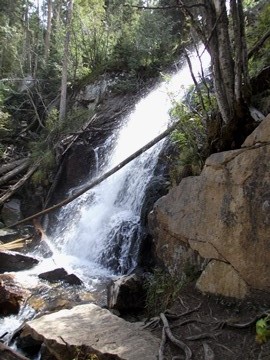 Much of the area around The Pool was scorched during the Fern Lake Fire in the fall of 2012. The wildfire burned 3500 acres in the lower Forest Canyon, Cub Lake and Moraine Park areas. It's believed it was sparked by an illegal campfire on October 9th. Although it was a low intensity fire, and for the most part remained under control, it still forced the closure of almost all the trails in the Moraine Park and Bear Lake Road areas for several weeks. That all changed on November 30th when a fierce wind storm brought 70 mph gusts that pushed the fire 3 miles in only 35 minutes, and more than doubled its size as it raced across Moraine Park. At its peak more than 600 fire fighters were assigned to the blaze. The fire was all but fully extinguished when heavy snow arrived in mid-December.
Much of the area around The Pool was scorched during the Fern Lake Fire in the fall of 2012. The wildfire burned 3500 acres in the lower Forest Canyon, Cub Lake and Moraine Park areas. It's believed it was sparked by an illegal campfire on October 9th. Although it was a low intensity fire, and for the most part remained under control, it still forced the closure of almost all the trails in the Moraine Park and Bear Lake Road areas for several weeks. That all changed on November 30th when a fierce wind storm brought 70 mph gusts that pushed the fire 3 miles in only 35 minutes, and more than doubled its size as it raced across Moraine Park. At its peak more than 600 fire fighters were assigned to the blaze. The fire was all but fully extinguished when heavy snow arrived in mid-December.
Roughly two-tenths of a mile beyond The Pool is the side trail that leads to the Old Forest Inn Backcountry Campsite, which contains two individual sites. Just past the campsite the trail begins a relentless climb of almost 400 feet over the course of the next seven-tenths of a mile to reach the base of Fern Falls, a beautiful 60-foot waterfall that plunges down Fern Creek. During this stretch you'll begin passing through areas that were severly burned during the East Troublesome Fire of 2020. This historic fire scorched nearly 29,000 acres within the park boundaries, making it the largest wildfire in Rocky Mountain National Park history.
From the waterfall the trail resumes its climb, and will ascend another 650 feet over the course of the next mile.
At roughly 3.7 miles from the trailhead hikers will reach the Spruce Lake Trail junction. This pleasant lake can be reached by hiking eight-tenths of a mile up a fairly rugged trail. The Fern Lake Individual Campground (four individual campsites) is also located on this side trail, roughly one-tenth of a mile above the junction.
Fern Lake is an easy walk of only one-tenth of a mile from this junction. Just before reaching the shore you'll pass the site of the former Fern Lake Backcountry Patrol Cabin. This historic cabin was built in 1925, and functioned as a ranger station until 1949, but was lost during the East Troublesome Fire in the fall of 2020.
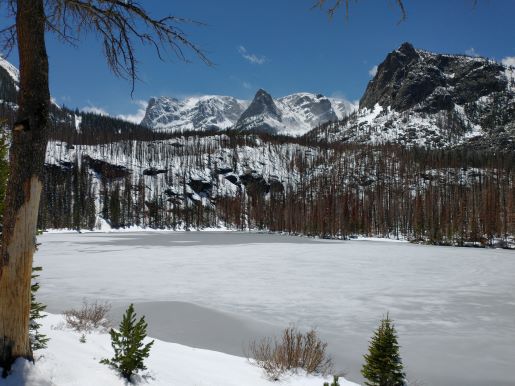
Just beyond the site of the former cabin hikers will finally arrive at Fern Lake, located roughly 3.8 miles from the trailhead. The north shore of the lake offers great views of 12,129-foot Notchtop Mountain, 11,586-foot Little Matterhorn, 12,331-foot Knobtop Mountain and 11,018-foot The Gable. However, in my opinion, the views from the east side of the lake are much better. This will require a quarter-mile walk and a climb of roughly 50 feet, along the main trail, to reach the scenic overlook area. Standing prominently behind the lake from this vantage point is 12,922-foot Stones Peak.
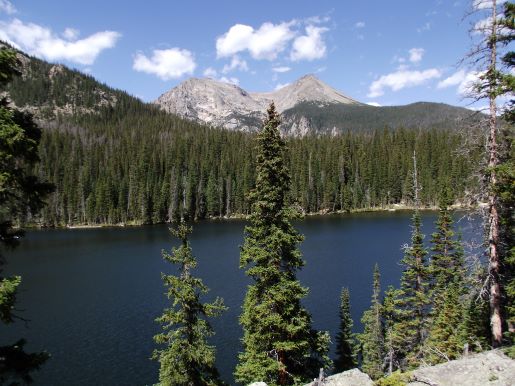
In the early 1900s Dr. William J. Workman began construction on a fishing lodge along the shores of the lake. This would eventually evolve into the Fern Lake Lodge, which would include a dining room, as well as a dormitory and log cabins that could accommodate up to 55 people. Although the lodge ceased most operations in the late 1930s, it continued serving light snacks through the 1950s. During the summer of 1958 the lodge was managed by future folksinger Judy Collins and her husband. In 1976 the National Park Service razed the property and returned the area to its natural state.
My book, Ramble On (a history of hiking), contains an extensive section on the development of trails and hiking culture in America's first tourist destinations, national forests and national parks.
